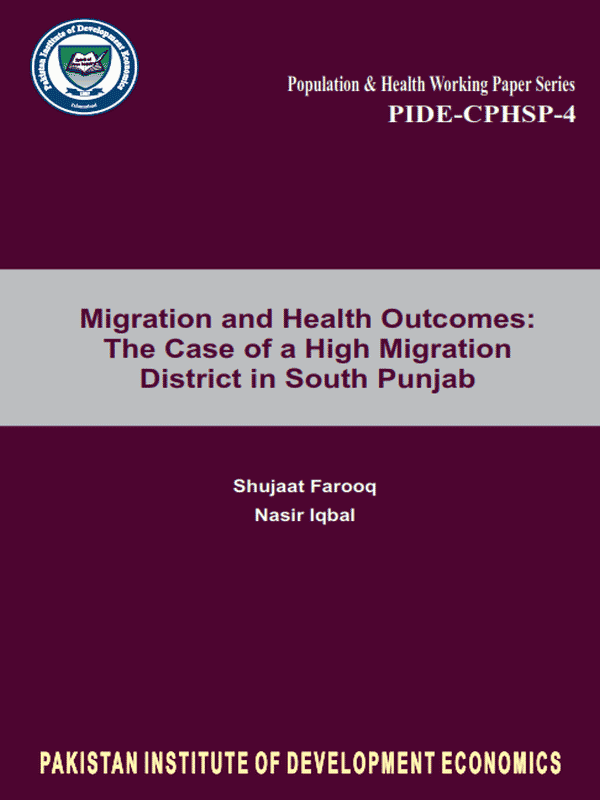
Pakistan Institute of Development Economics
- Home
Our Portals
MenuMenuMenuMenuMenuMenuMenu - ResearchMenuMenuMenuMenuMenuMenuMenu
- Discourse
- The PDR
- Our Researchers
- Academics
- Degree Verification
- Thesis Portal
- Our Portals
Migration and Health Outcomes: The Case of a High Migration District in South Punjab
Human nature responds to incentives which ultimately improve economic and social well-being. Migration is one of the incentives which yield multidimensional well-being through remittances both in short and long term. The short-term effects include increase in consumption and reduction in poverty and inequality, while the long term effect is socio-economic development i.e. higher earnings, human capital formation including education and health and creation of assets and durable goods [Vidal (1998)]. Moreover, due to their significant input to welfare transfers, remittances act like a safety net for relatively poor segments of the society [Jones (1998)]. Levitt (1998) terms remittances as “social transfers”, which may include flow of ideas, behaviours, identities and social capital, from destination community to the migrant or transfers-recipient society. Such social transfer is ‘fuel’ for recipient places as it can boost up entrepreneurship, political integration and community formation. Though both of the constructive and destructive aspects are associated with social remittances, yet a positive contribution to overall social development is made by some forms of remittances such as the exchange of health, educational and social practices and transfer of new business skills [Mara, et al. (2012)].



